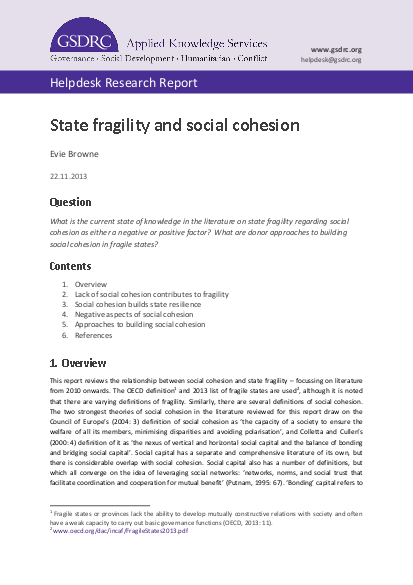
This report reviews the relationship between social cohesion and state fragility – focussing on literature from 2010 onwards. The OECD definition1 and 2013 list of fragile states are used2, although it is noted that there are varying definitions of fragility. Similarly, there are several definitions of social cohesion. The two strongest theories of social cohesion in the literature reviewed for this report draw on the Council of Europe’s (2004: 3) definition of social cohesion as ‘the capacity of a society to ensure the welfare of all its members, minimising disparities and avoiding polarisation’, and Colletta and Cullen’s (2000: 4) definition of it as ‘the nexus of vertical and horizontal social capital and the balance of bonding and bridging social capital’. Social capital has a separate and comprehensive literature of its own, but there is considerable overlap with social cohesion. Social capital also has a number of definitions, but which all converge on the idea of leveraging social networks: ‘networks, norms, and social trust that facilitate coordination and cooperation for mutual benefit’ (Putnam, 1995: 67). ‘Bonding’ capital refers to
links within a group, and ‘bridging’ capital to links with other groups. It is important to remember that all these terms and theories have multiple meanings and definitions.
